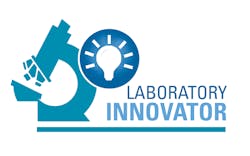Why did you decide to become a medical technologist and to specialize in molecular microbiology?
What accomplishment are you most proud of during the 17 years you spent at the Centers for Disease Control and Prevention (CDC)?
I am most proud of leading the CDC-FDA Antibiotic Resistant (AR) Isolate Bank and the CDC AR Laboratory Network. The bank provides medical laboratories, researchers, and industry with well-characterized resistant pathogens. This ensures new and existing laboratory tests can detect significant AR threats, and new drugs are active against the most resistant pathogens. The AR Lab Network creates a national capacity to detect and characterize resistant pathogens. This is a laboratory resource that healthcare systems can access for the testing needed to make infection prevention decisions and for outbreak response.
In your opinion, which pathogen(s) pose the greatest threat and why do they?
Carbapenem-resistant Enterobacteriaceae (CRE) keeps me up at night. There are few drugs for treating CRE infections, and there are not enough drugs in the pipeline. Right now, CRE primarily cause infections in healthcare settings; however, these bacteria have the potential to cause community-associated infections as well. Preventing infections in the community is much harder than in hospitals. We have already seen methicillin-resistant Staphylococcus aureus and ESBL-producing Enterobacteriaceae infections transition from healthcare settings to community settings. It seems like it is only a matter of time before this happens for CRE.
Will you describe colonization testing and what role it could play in combating the spread of antimicrobial resistant pathogens in hospital and community settings?
Diagnostic tests are typically aimed at detecting infections and the pathogens that cause infections. However, before a patient is infected, they are often colonized with a pathogen, and sometimes, these pathogens are resistant to antibiotics. For example, a person can become colonized with CRE in the gastrointestinal tract. This person is at greater risk for infection, and they can pass the pathogen to other people – especially in healthcare settings. Detecting colonization using laboratory tests is an essential tool for disrupting person to person transmission. The CDC recommends CRE colonization testing as a tool for infection prevention in healthcare settings. Colonization testing is recommended for CRE prevention, but some hospitals do not do this testing in house because it is not an everyday test.
What technical advances do you think will be incorporated into pathogen identification and antimicrobial susceptibility testing over the next three- to five-years?
Pathogen identification and antimicrobial susceptibility testing will get much faster in the next few years. Maldi-TOF technology has already had a considerable impact on rapid identification, changing this from an overnight test to a test that takes just a few minutes. Faster antimicrobial susceptibility testing from a positive blood culture is a reality too, but future rapid AST (antimicrobial susceptibility testing) systems are challenged with combining a simple laboratory workflow with increased instrument throughput and results that meet overnight AST accuracy. All of this needs to be done without adding costs that cannot be absorbed in today’s healthcare environment. That is a big lift, and there are lots of tests in development, which truly makes this an exciting era of microbiology laboratory innovation.
Harnessing the data generated by infectious disease and AST systems requires software solutions that can integrate test results from multiple sources and generate reports that provide a comprehensive picture of AR infections within a healthcare setting and healthcare system. Data like these are essential for implementing the best antibiotic stewardship and infection control measures. I expect a lot of innovation in this area.
What is Beckman Coulter doing to help combat AMR?
Beckman Coulter has a system that connects rapid MALDI-TOF pathogen identification with accurate MICs (minimum inhibitory concentrations). Accuracy is the most important feature when a lab needs to detect an AR threat like CRE or other pathogens on the on CDC AR threats list.
Beckman Coulter is a Danaher company, and we have a commitment to innovate. We look to the future, ensuring that our customers have effective tools in their effort to combat antibiotic resistance.


